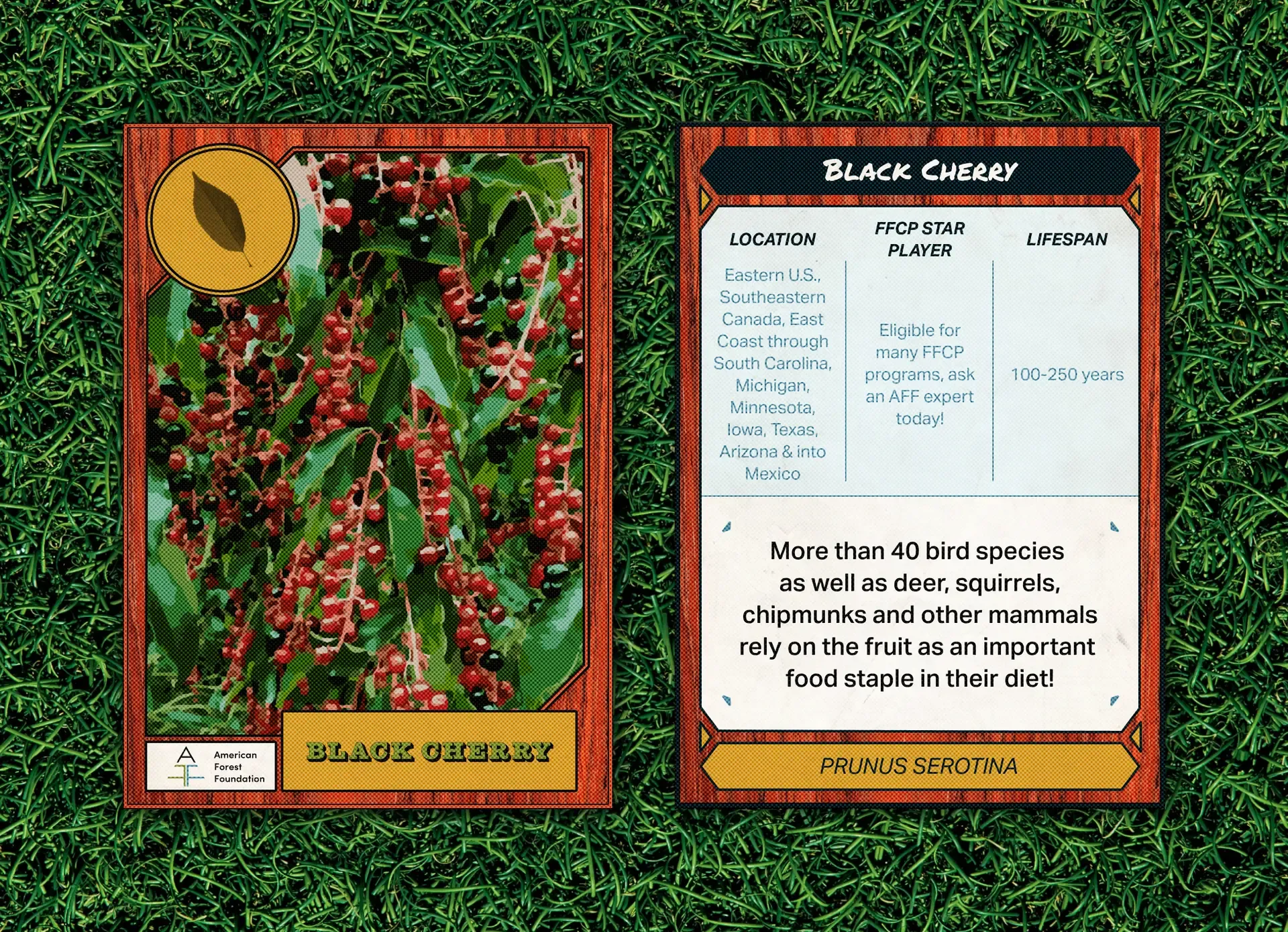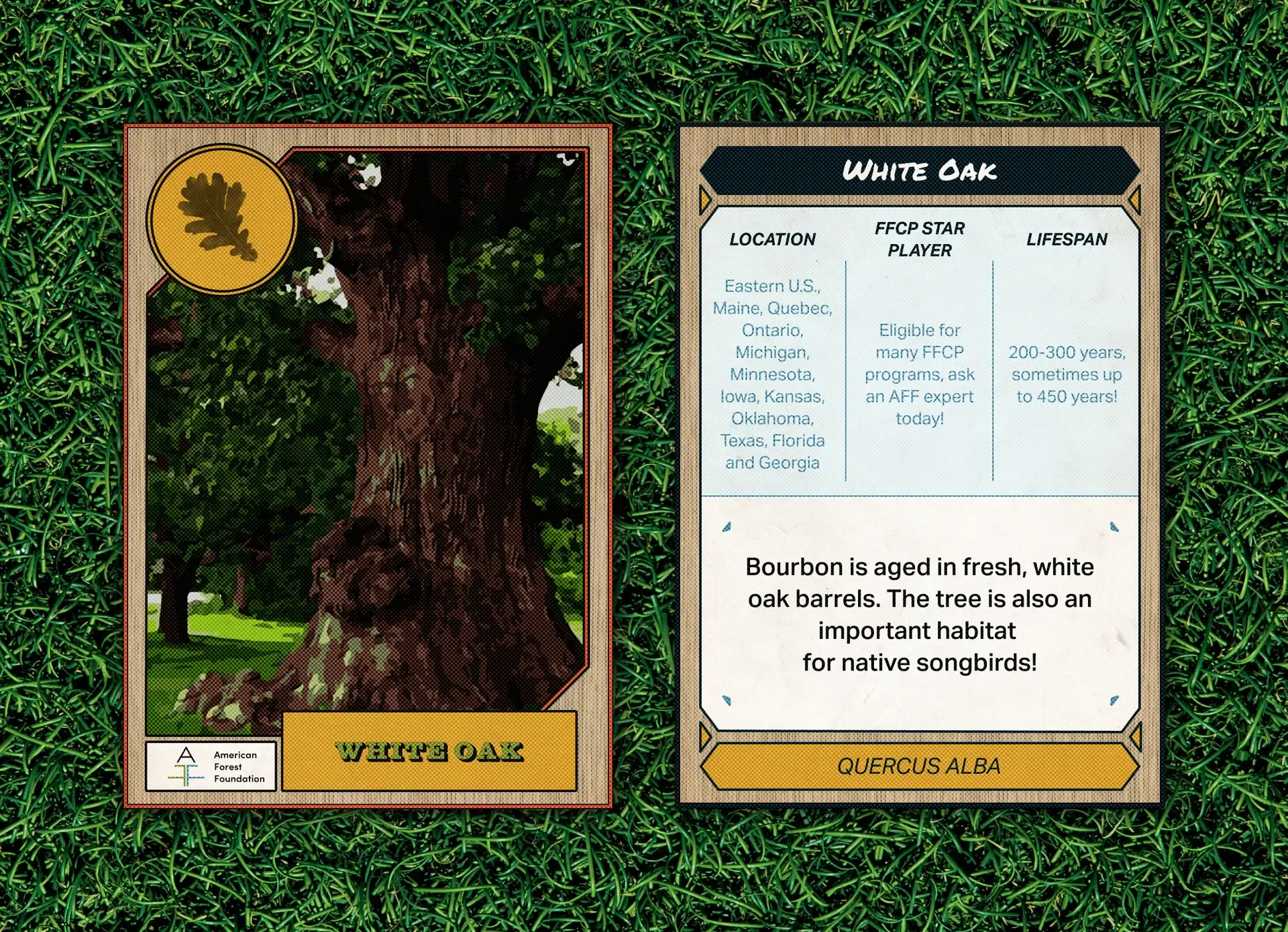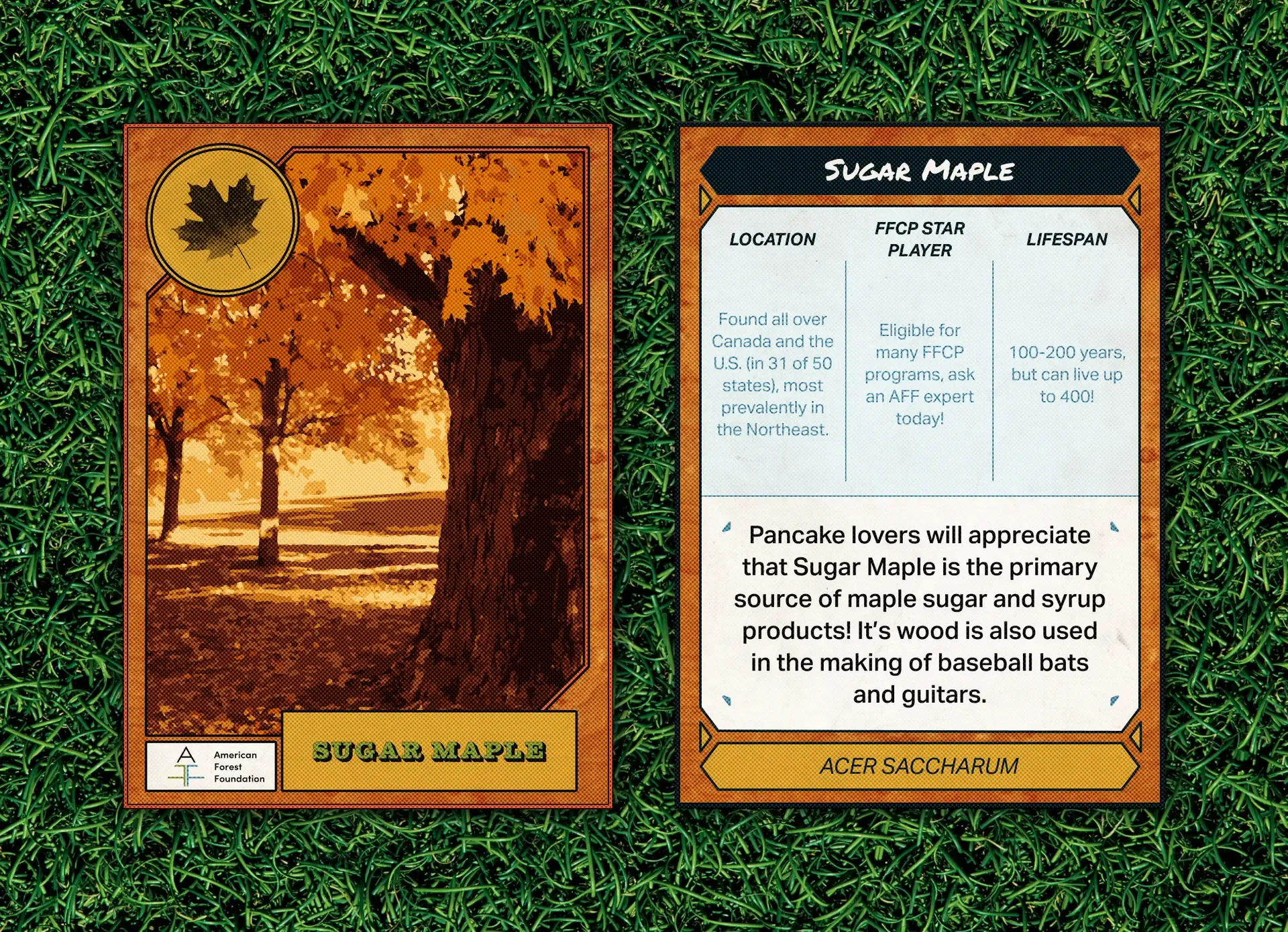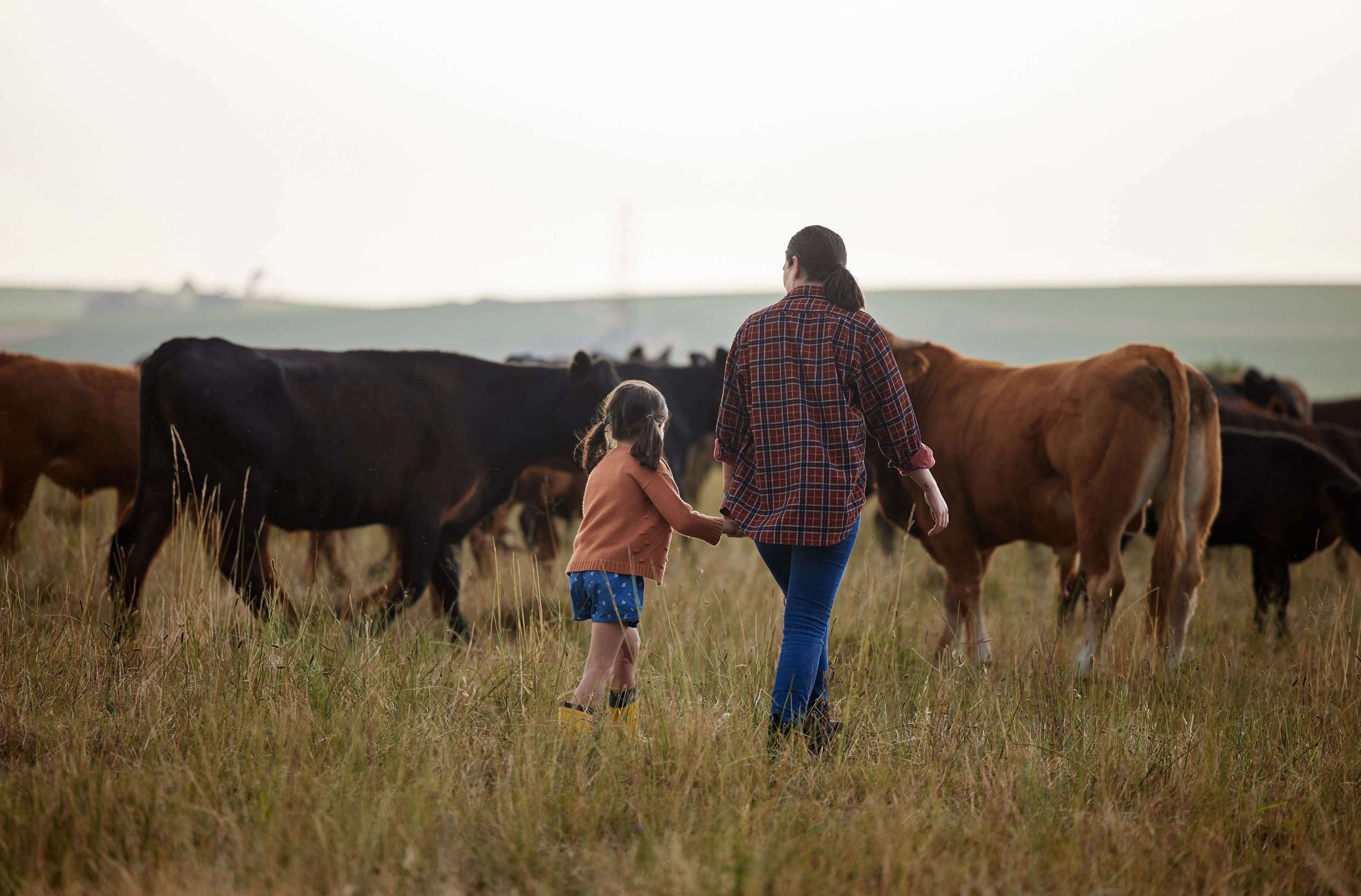AFF Celebrates Earth Day Through #TreeFeatures (Part 1)

This year, AFF is celebrating Earth Day by taking you out to the forest to meet five trees that are star players in their native ecosystems. Our campaign #TreeFeatures showcases the following flora athletes that are all eligible for enrollment throughout select counties in our Family Forest Carbon Program (FFCP): Black Cherry, Quaking Aspen, White Oak, Red Elm, and Sugar Maple. These Earth Day Hall-of-Famers hit home runs against climate change by capturing and storing carbon, while also providing vital protection and food for animals and plants.
This first #TreeFeature spotlights Black Cherry, Quaking Aspen, and White Oak.
Black Cherry (Prunus serotina)

An important part of forest ecosystems, this slugger weighs in as the largest of our native cherries and is found throughout the Eastern United States. Black cherry is an all-around player that’s adapted to many different environments. Its home-field advantage and native range extends from Southeastern Canada (Nova Scotia, New Brunswick, Quebec, and Ontario), along the eastern U.S. coast through South Carolina and Florida, and towards the Midwest (Michigan, Minnesota, and Iowa). Black cherries have been reported to live up to 250 years, but most live between 80-100 years. Seed production begins as young as about 10 years, but maximum production occurs between 30-100 years.
FLORA & FAUNA:
Black cherries adapt well in many different environments. It is for this reason that they can be found as part of a variety of forest types. Most notably, this species is found in Northern hardwoods and is associated with maple species (sugar and red) that are found in the Allegheny Plateau and mountains of Pennsylvania, New York, West Virginia, and Maryland.
As a flowering and fruit bearing tree, many creatures thrive off black cherries within the forest system, ranging from flies, bees, and beetles that collect the pollen and nectar, to more than 40 bird species (woodpeckers, ruffed grouse, turkeys, and wood thrushes to name a few) which feed on the fruit and insects. This cherry's fruit is an important food staple in the diets of a variety of mammals, such as deer, moles, mice, squirrels, chipmunks, and others.
By fruiting and attracting flies, bees, and beetles, this species supplies a large amount of insect biomass to birds and mammals during its life and death stages. This fuels the ecosystem throughout the year and allows for a diverse range of species to eat and hunt around this tree. Because of these and other benefits, the black cherry helps maintain a high level of biodiversity within an area, benefiting the surrounding ecosystem.
RISKS:
Eastern tent caterpillars and cherry scallop shell moths are a risk to the black cherry’s health because they defoliate the trees, which sometimes results in growth loss and eventual tree death depending on the infestation level. Black cherry is also prone to root rot and general decay. Once rot or decay sets in, insects quickly move in and begin feeding, speeding up the tree's eventual death. However, insect infestation is also why black cherries are a favorite tree of woodpeckers especially pileated woodpeckers.
FUN FACT:
Native vines like poison ivy and Virginia creeper use the black cherry trunk as a cooperative pollinator lure, attracting bees and other species, without harming the tree.
Black cherries can be enrolled in three FFCP practices: Growing Mature Forests in the Central Appalachian Region and both Growing Older Forests and Enhancing Your Woodlands in the Northeast.
Learn more about FFCP today!
Quaking Aspen (Populus tremuloides)

Quaking aspen is the most widely distributed tree species in North America. It grows from Alaska, across the Northwest Territories to Quebec and Newfoundland, south to West Virginia and in all western U.S. states except Oklahoma and Kansas. You can find this tree in all Canadian provinces and all but 13 states. Aspen can live as long as 100 years, but typically start to decline around age 60.
FLORA & FAUNA:
The quaking aspen is a homerun for wildlife real-estate. Many game species, like the ruffed grouse, inhabit aspen forests due to their dense cover and food availability. Quaking aspen is a preferred species for moose in the wintertime and is also grazed heavily by deer. Aspen forests are also an important breeding habitat for several bird species. Aspens provide an ideal forest habitat for nesting because of the moist conditions in which these trees grow. Moisture in forests leads to higher levels of insect biodiversity and therefore higher food abundance for the parenting birds to feed their chicks.
This Populous is – you guessed it – POPULAR for its showstopping foliage. However, these trees are not the main species making up the forest ecosystem, but they offer additional levels of biodiversity within the area. Associated subdominant species include willows, alders, black cottonwood, and several pines and firs.
Quaking aspen is a pioneer species, meaning it is the first species to inhabit an open or disturbed space. They grow very quickly and can provide thick tree cover in as little as ten years. Pioneer species benefit their environment because they increase the resilience of the ecosystem after disturbance. Resilience is a measure of a species or ecosystem’s ability to “bounce back” after being negatively affected by disturbance events such as wildfires, wind events, etc. Because of high resilience, quaking aspens are often the first to grow back after a large fire or wind event.
RISKS:
Aspen is not projected to adapt as well as other species in the face of climate change stressors. Aspen is one of few deciduous trees of forests in the West, and this tree can sequester large amounts of carbon and water in its extensive root system. But it takes time to build strong root systems, even with how fast the quaking aspen can grow and pioneer new areas. As temperatures rise due to climate change, experts are observing that aspen die-offs are occurring at a greater rate than the tree is able to regenerate within an ecosystem. As climate change further stresses this species, researchers believe the pace of die-offs will only increase.
FUN FACT:
As a root sucker species, aspen can essentially live forever if continuously disturbed. One of the oldest living organisms in the world is a quaking aspen colony in Utah called Pando, which is estimated to be several thousand years old.
Quaking aspen can be enrolled in AFF’s FFCP practices: Promoting Diverse Forests in the Midwest, Growing Mature Forests in the Central Appalachian Region and both Growing Older Forests and Enhancing Your Woodlands in the Northeast.
Learn more about FFCP today!
White Oak (Quercus alba)

The white oak hits dingers no matter the pitch – it's an all-around player from all around North America. White oak grows throughout most of the Eastern United States, from southwestern Maine and southern Quebec, west to southern Ontario and central Michigan, to southeastern Minnesota. White oak can also be found in more southern regions like western Iowa, eastern Kansas, Oklahoma, and Texas, as well as northern Florida and Georgia. White oak can live upwards of 450 years, but typically lives 200-300 years.
FLORA & FAUNA:
After the decline in our American chestnut trees, the white oak’s acorns became the dominate food source for many bird and mammal species, including songbirds and gamebirds. White oaks are also the host tree for hundreds of insect species during their larval and adult life stages. With plentiful roosting branches and an abundance of insects, buds, and acorns to eat, this tree is a perfect habitat for birds, and their saplings are typically sought after by browsing deer and rabbits.
White oaks can be found throughout most forest types but will prefer a dryer site as opposed to its swamp white oak relative. Native vines like poison ivy and Virginia creeper utilize the trunk as a cooperative pollinator lure without harming the tree. Typical oak hardwood stands will contain oaks, cherries, birches, pines, hickories, elms, and others.
White oak is an important species for pollinators. When also paired with Virginia creeper, the tree attracts many pollinating species. Increasing pollination rates and pollinator biodiversity can positively affect an environment by increasing the rate at which flora species can reproduce. Additionally, by drawing in pollinator species, the oak is drawing in their predators like birds and mammals which further increases environmental biodiversity.
RISKS:
Climate change has decreased the viable habitat for many trees, including the white oak. On top of this, more white oaks are being harvested than are naturally regenerating. Spongy moths can also cause massive defoliation events which can stress the trees and cause decline.
FUN FACT:
Bourbon is aged in fresh white oak barrels. White oak is also resistant to oak wilt, which is decimating red oak populations across the U.S.
White oak can be enrolled in three FFCP practices: Growing Mature Forests in the Central Appalachian Region and both Growing Older Forests and Enhancing Your Woodlands in the Northeast.
Read Part 2 of our #TreeFeatures to find out which tree was named AFF’s Tree of the Year!
Related Articles

April 22, 2023
AFF Celebrates Earth Day Through #TreeFeatures (Part 2)
As part of our #TreeFeature Campaign, AFF is showcasing the MVPs of the forest – trees that fight climate change by capturing and storing carbon and protecting the health of flora and fauna alike in their ecosystems.

October 21, 2025
The Value of Your Fields & Forests Project
Curious what the Fields & Forests program really offers? Beyond the $30 per acre payment, there are added cost savings and income opportunities that make enrollment even more valuable. See how it all adds up!

September 16, 2025
Forester Spotlight: Keely Dunham
We’re excited to highlight Keely Dunham, a dedicated forester with the Family Forest Carbon Program who brings scientific expertise, on-the-ground experience, and a passion for helping landowners connect with and care for their forests.